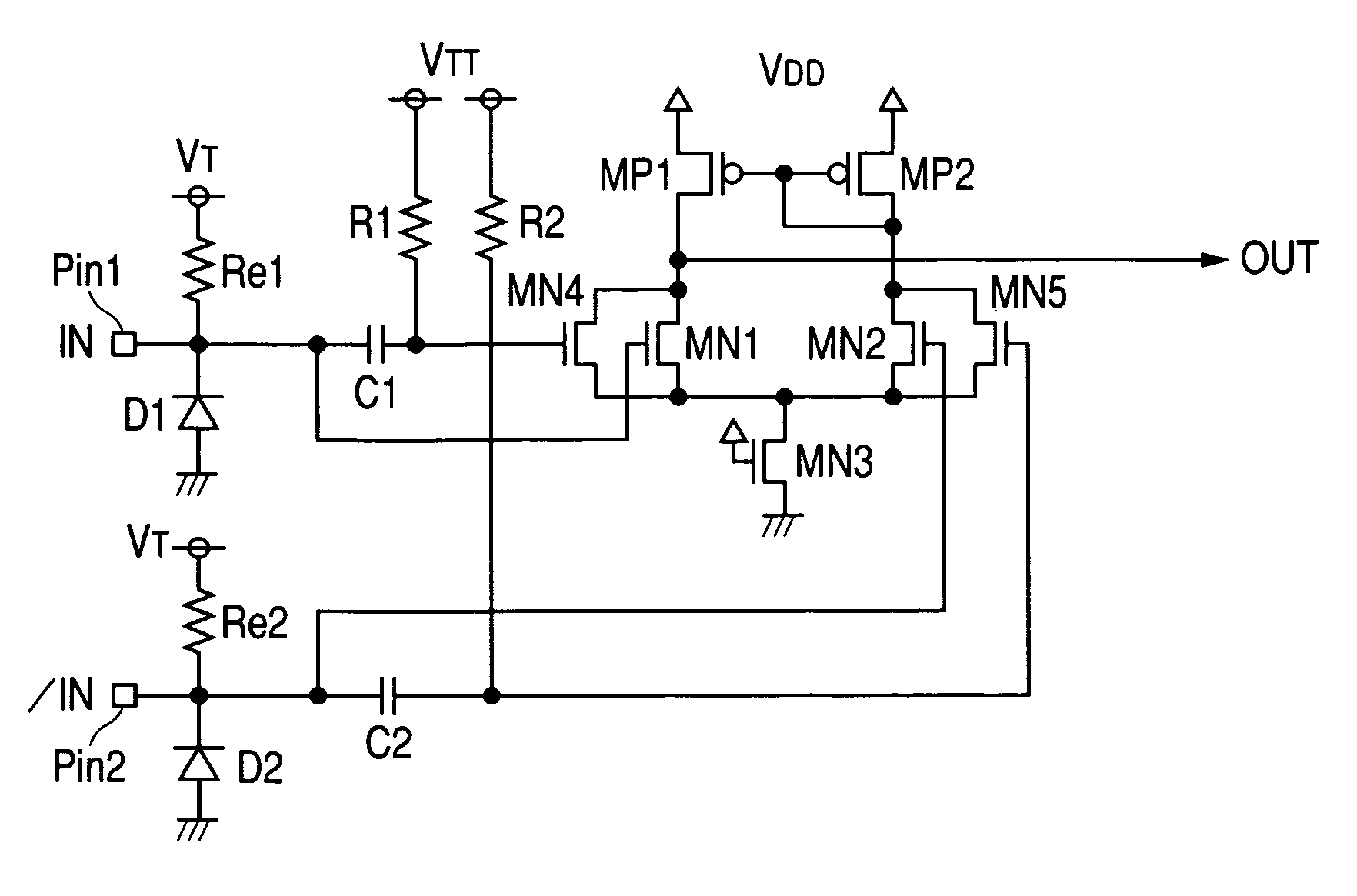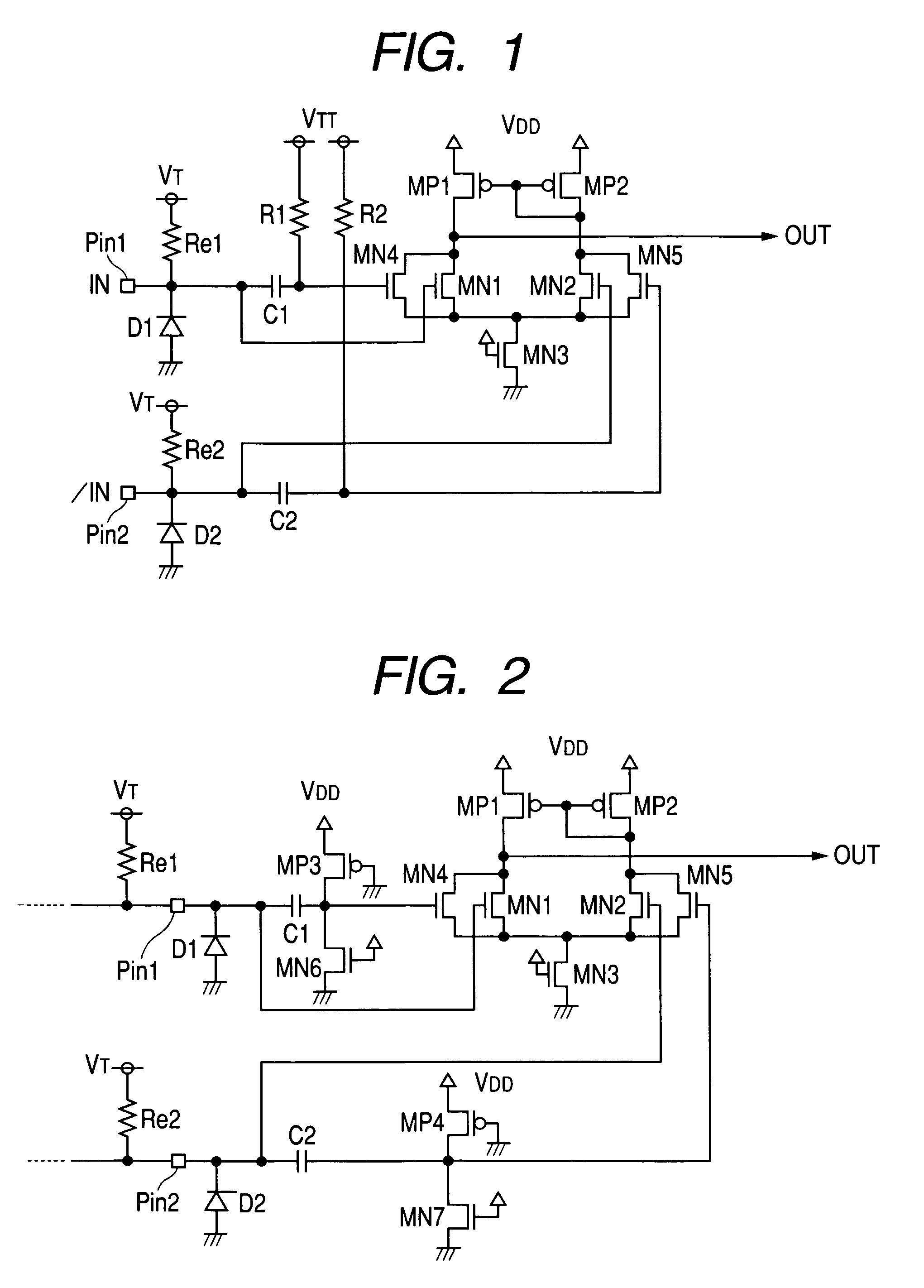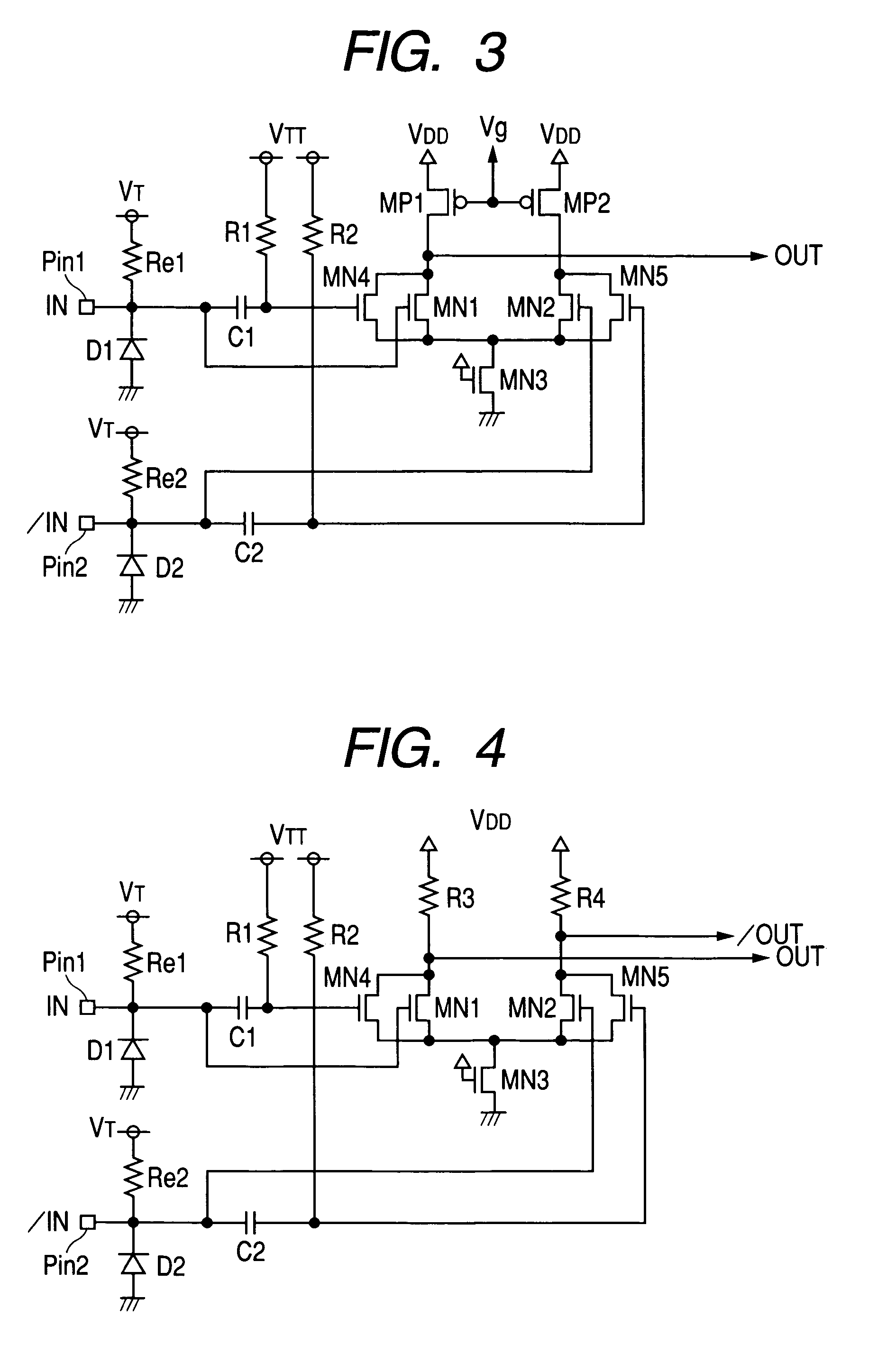Semiconductor integrated circuit device and semiconductor integrated circuit
a technology of integrated circuit and semiconductor, which is applied in logic circuit coupling/interface arrangement, baseband system details, pulse manipulation, etc., can solve the problems of unavoidable expansion of chip size, inability to avoid significant increase of chip size, and another conventional problem, so as to prevent input data signals, prevent signal amplitude reduction, and prevent duty distortion
- Summary
- Abstract
- Description
- Claims
- Application Information
AI Technical Summary
Benefits of technology
Problems solved by technology
Method used
Image
Examples
first embodiment
[0051]FIG. 1 shows a differential input circuit (hereinafter, to be referred to just as the input circuit) in the present invention.
[0052]In FIG. 1, Pin 1 and Pin 2 denote input terminals to which differential input signals IN and / IN are inputted from external. In a semiconductor integrated circuit, these input terminals are generally formed as electrodes referred to as bonding pads connected to one end of bonding wire respectively or pads connected to the package side electrodes through a solder ball or the like respectively.
[0053]The input circuit in this first embodiment is configured by a pair of N-channel differential input MOSFETs MN1 and MN2, each having a source terminal connected to that of the other to form a common source and a gate terminal connected to one of the pair of input terminals Pin1 and Pin2; a pair of N-channel differential input MOSFETs MN4 and MN5, each having a source terminal connected to that of its corresponding N-channel differential input MOSFET MN1 / M...
second embodiment
[0078]FIG. 7 shows an input circuit in the present invention.
[0079]The input circuit in this second embodiment is modified from that in the first embodiment so that N-channel MOSFETs are replaced with P-channel MOSFETs MP1 to MP5 used as both differential input and current generators and P-channel load MOSFETs are replaced with N-channel load MOSFETs MN1 and MN2. The input circuit in this second embodiment is characterized in that the center potential to be supplied to the internal circuit can be set lower than that of the input circuit in the first embodiment.
[0080]FIG. 8 shows a variation of the input circuit in this second embodiment. The variation is equivalent to that of the first embodiment, shown in FIG. 3. FIG. 9 shows another variation of the input circuit in this second embodiment. The variation is equivalent to that of the first embodiment, shown in FIG. 4. Although not shown in any drawing, other variations are also possible. For example, the resistors R1 and R2 in the i...
third embodiment
[0081]FIG. 10 shows an input circuit in the present invention.
[0082]The input circuit in this third embodiment is configured so as to receive the differential input signals IN and / IN at the P-channel differential input MOSFETs MP1, MP2, MP4, and MP5, as well as at the N-channel differential input MOSFETs MN1, MN2, MN4, and MN5. The drains of the P-channel and N-channel differential input MOSFETs MP1, MP2, MP4, and MP5 are connected to a ground point through the load elements R13 and R14 respectively while the drains of the N-channel differential input MOSFETs MN1, MN2, MN4, and MN5 are connected to the supply voltage terminal VDD through the load elements R11 and R12 respectively.
[0083]MOSFETs MP8 and MN8 used to set the center potential of each output signal are connected to each other serially between the load elements R11 and R13 while MOSFETs MP9 and MN9 used to set the center potential of each output signal are connected to each other serially between the load elements R12 and...
PUM
 Login to View More
Login to View More Abstract
Description
Claims
Application Information
 Login to View More
Login to View More - R&D
- Intellectual Property
- Life Sciences
- Materials
- Tech Scout
- Unparalleled Data Quality
- Higher Quality Content
- 60% Fewer Hallucinations
Browse by: Latest US Patents, China's latest patents, Technical Efficacy Thesaurus, Application Domain, Technology Topic, Popular Technical Reports.
© 2025 PatSnap. All rights reserved.Legal|Privacy policy|Modern Slavery Act Transparency Statement|Sitemap|About US| Contact US: help@patsnap.com



